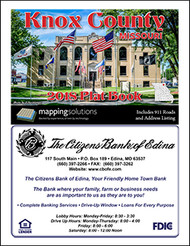The Hidden Treasure in Plat Books
Posted by Stacey Garton, Graphic Designer at Mapping Solutions on 11th Mar 2025
The uses of plat books vary in many industries, businesses and recreations. We often think of them being used primarily for research and identification purposes in our current, daily life. As a history buff and genealogist, I have found our modern plat books to serve useful purposes in diving into our heritage and past.
Many people don’t know that the Bureau of Land Management has a data base of records dating back to the 1800’s containing land grants, land patents, survey plats and field notes. These land patents can be searched by state, name, land description or land office. Read more
The records are official document copies of land patents that our ancestors were granted or purchased. They contain the description of township and range as well as the legal name of the land holder. These records can be compared with current plat maps to identify acreage and family farms our ancestors settled many years ago.
I find it interesting to compare and view family home places my ancestors migrated to, left behind and started over on. Often, there are family cemeteries associated with these plots of land that are long forgotten.
Taking a view of the “big” picture is often overwhelming to see the surrounding area and I am surprised to see familiar names still residing in the area of farms and land passed down through the generations. Farms and land that many times were “earned” after serving in our military, most commonly after the Civil War. This land was a fresh start in a new place. A place for healing and a new beginning.
As my father ages into is mid 80’s, he often thinks of his home as a young boy. While we reside in Missouri, his home place was Mississippi. Having left there as a young man to join the military, he settled in Missouri never to return home to the south.
I recently had the pleasure of working on two books for counties in Mississippi. These counties are still home to my family. These are the places where my father ran the fields and swamps as a child with his brothers, sisters, cousins and friends. My father worked fields here with his hands and sweat. My ancestors carved out a life here years ago. Many memories of this beloved place flourish in my father’s mind from times long ago.
While we recognize the modern uses for the plat books we produce, there is a hidden treasure in them. Older people can look at these books, the names, places and the information and be taken back in time. Names that slipped from memory over time now appear again. Neighbors forgotten are remembered. Stories and tales come to mind that had not been told or shared before. There is a renewed sense of times gone by, family, friends and hard work that come to light in the pages and boundaries of these maps.
There are some in the older generation that have looked at a plat map. They have never had a visual of how the boundaries between them and a neighbor actually flows. They have walked the fence and can tell you every stone, ditch, tree and marker in the path, but have never seen the “birds eye view” a plat map offers. We take that for granted in this generation with all the technology we have. My father’s generation was often too busy carving out a living and providing for a family to keep up with technology or take an interest unless they were buying or selling their land.
I know the feeling I have looking at old family owned land and re-tracing the historical land deeds but I truly don’t know what it must be like to look at this from the perspective of an 85 year old person. My father has had countless hours of joy in reading these books and remembering things as far back as his days as a small child. This makes me happy and proud to be a part of producing these books. We are making history with every book but we are also allowing a little history to be relived.


